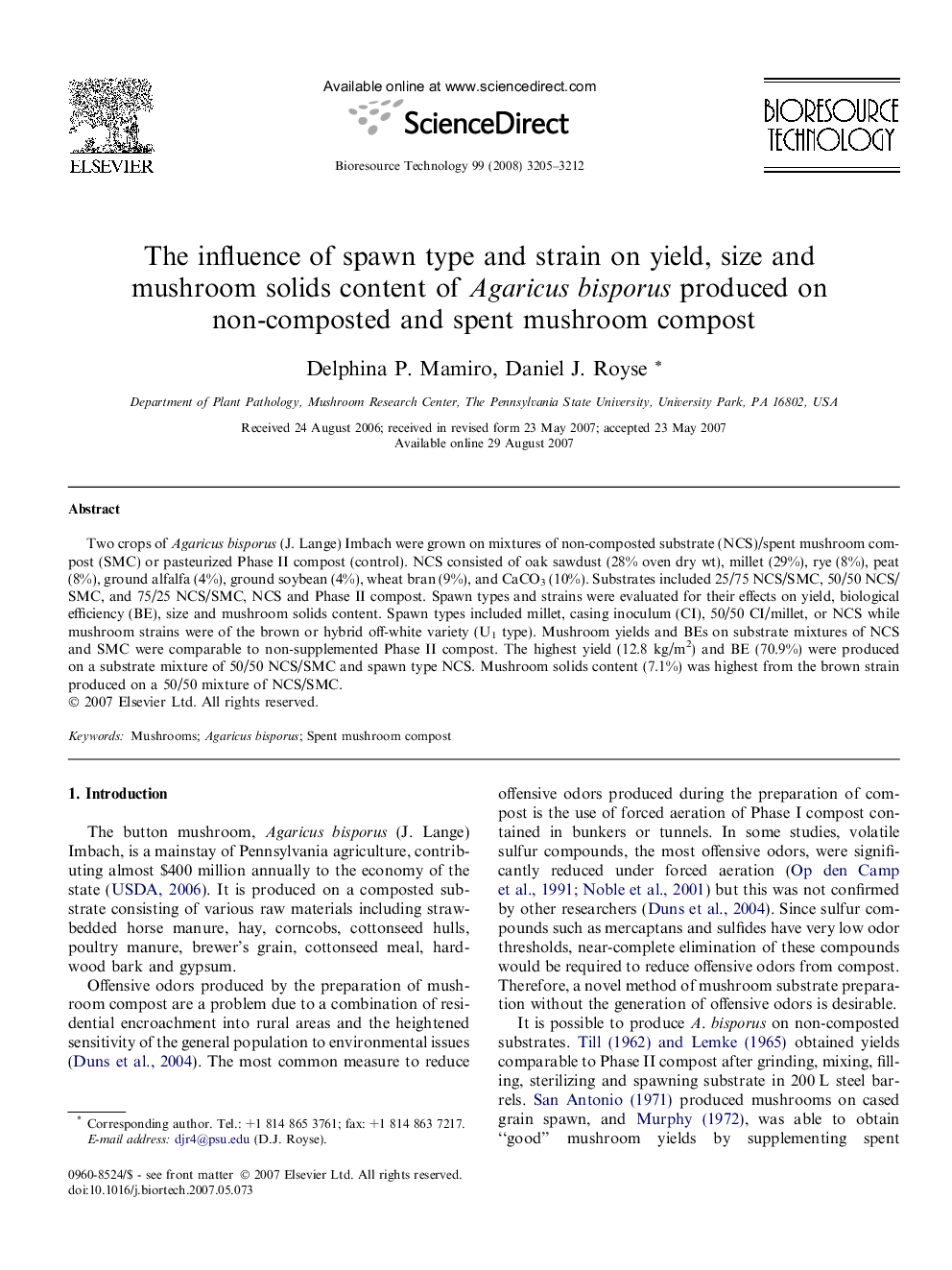| Article ID | Journal | Published Year | Pages | File Type |
|---|---|---|---|---|
| 685788 | Bioresource Technology | 2008 | 8 Pages |
Two crops of Agaricus bisporus (J. Lange) Imbach were grown on mixtures of non-composted substrate (NCS)/spent mushroom compost (SMC) or pasteurized Phase II compost (control). NCS consisted of oak sawdust (28% oven dry wt), millet (29%), rye (8%), peat (8%), ground alfalfa (4%), ground soybean (4%), wheat bran (9%), and CaCO3 (10%). Substrates included 25/75 NCS/SMC, 50/50 NCS/SMC, and 75/25 NCS/SMC, NCS and Phase II compost. Spawn types and strains were evaluated for their effects on yield, biological efficiency (BE), size and mushroom solids content. Spawn types included millet, casing inoculum (CI), 50/50 CI/millet, or NCS while mushroom strains were of the brown or hybrid off-white variety (U1 type). Mushroom yields and BEs on substrate mixtures of NCS and SMC were comparable to non-supplemented Phase II compost. The highest yield (12.8 kg/m2) and BE (70.9%) were produced on a substrate mixture of 50/50 NCS/SMC and spawn type NCS. Mushroom solids content (7.1%) was highest from the brown strain produced on a 50/50 mixture of NCS/SMC.
